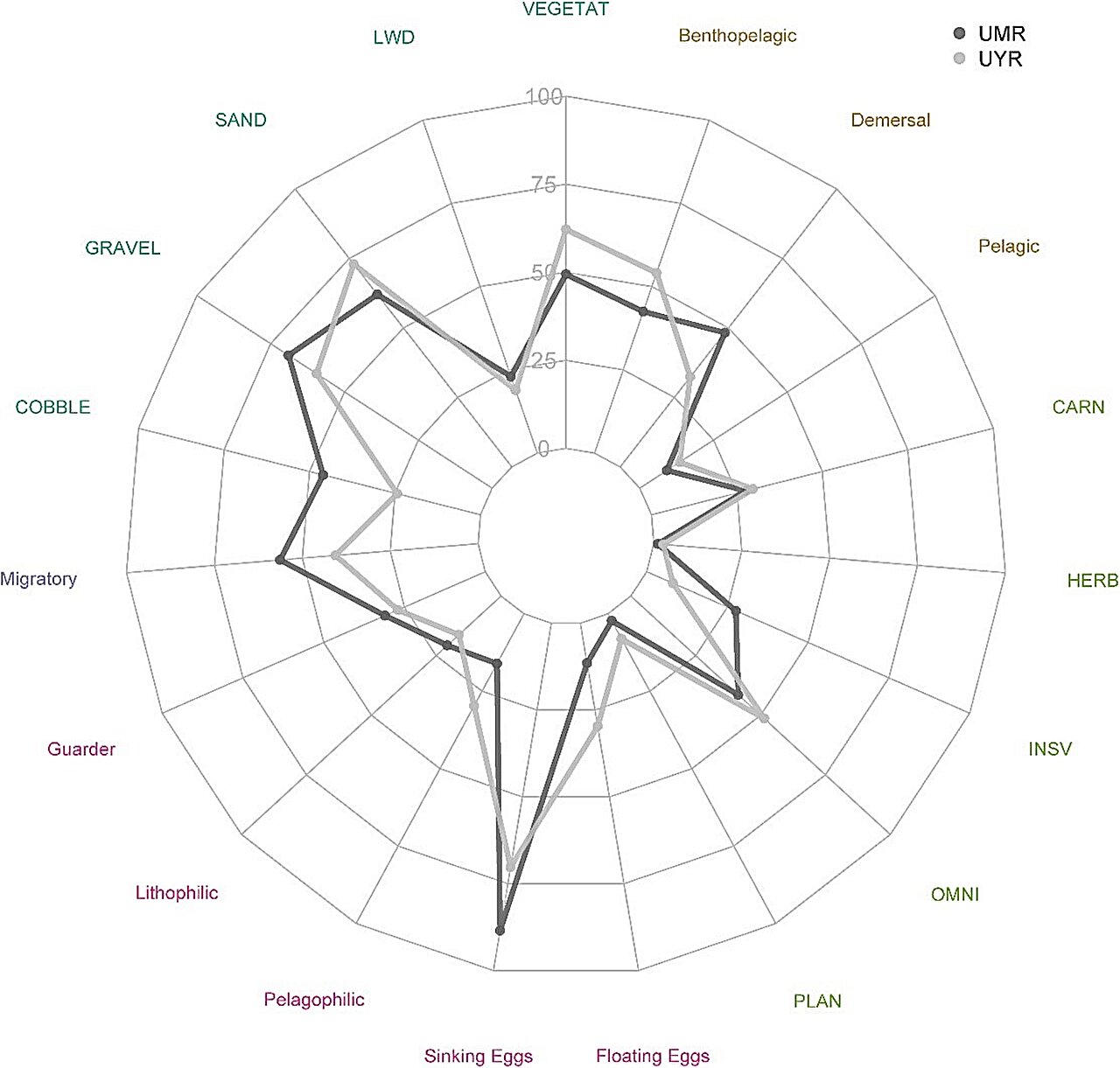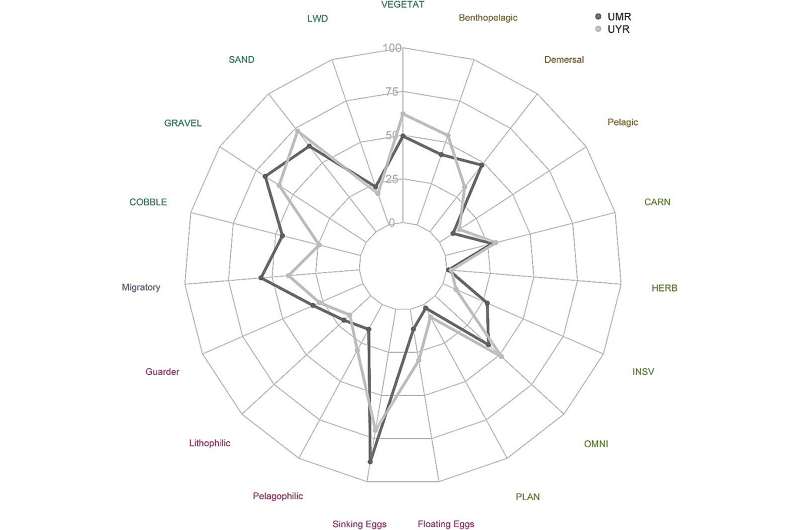
by KeAi Communications Co.

Many of the world’s large rivers have been modified to support food security, hydropower production, navigation and trade. While these developments are necessary to support a growing human population, they also pose substantial risks to the structure and functioning of aquatic ecosystems.
Given the challenge of sustaining human livelihoods while implementing biodiversity conservation, inter-basin partnerships have been established to facilitate the exchange of best management practices. However, few direct comparisons have been made to highlight similarities and differences among large riverine ecosystems, potentially limiting the effectiveness of inter-basin exchanges.
“When we take a look at fish assemblages in the Mississippi and Yangtze Rivers, there are only a handful of species that are shared between the two systems, making it difficult to draw meaningful comparisons,” said lead author Kyle Brumm, a doctoral student in the Department of Fisheries and Wildlife at Michigan State University.
To overcome this challenge, an international team of researchers compiled data on the feeding habits, reproductive strategies and habitat preferences of more than 120 species—ultimately using summaries of these traits to investigate and compare responses of fishes to environmental conditions between the two systems. The research is published in the journal Water Biology and Security.
“By combining traits with environmental data including factors like climate, land use and water quality, we gain a better understanding of why biodiversity loss is occurring,” Brumm explained. “Traits provide details about what a species needs to survive, grow, and reproduce, so this type of analysis tells us whether biodiversity loss is associated with changes in food availability, habitat complexity or water temperature, to name a few examples.”
Despite differences in species identities, traits of fish assemblages in the Mississippi and Yangtze Rivers were very similar. Traits that were most influential in determining species’ responses to the environment were those associated with feeding habits and habitat preferences. Collectively, these findings provide insights to develop management strategies and safeguard against the loss of ecological functions (e.g., nutrient cycling) in these two internationally important riverine ecosystems.
“Besides providing insights into fishes of the Mississippi and Yangtze Rivers, the approaches adopted in this study can be applied to formulate expectations and test hypotheses in other large rivers throughout the world, which are generally understudied relative to smaller rivers and streams,” Brumm added.
More information:
Kyle J. Brumm et al, Relationships between environmental variables and fish functional groups in impounded reaches of the Upper Mississippi and Yangtze Rivers, Water Biology and Security (2024). DOI: 10.1016/j.watbs.2024.100291
Provided by
KeAi Communications Co.
Citation:
Bridging large riverine ecosystems for inter-basin exchanges (2024, September 16)
retrieved 16 September 2024
from https://phys.org/news/2024-09-bridging-large-riverine-ecosystems-inter.html
This document is subject to copyright. Apart from any fair dealing for the purpose of private study or research, no
part may be reproduced without the written permission. The content is provided for information purposes only.